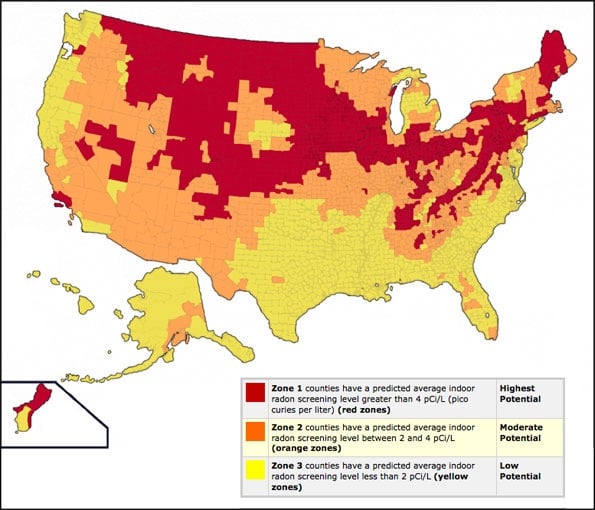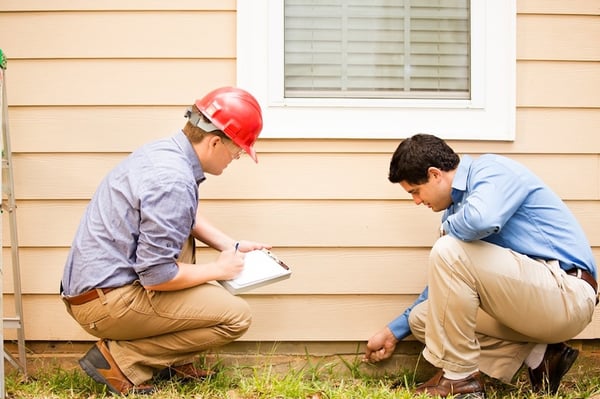Buying a new home is a roller coaster of emotions.
There are just as many ups and downs, and sometimes you aren't sure what they're more of.
One minute you feel like it's the best thing you've ever done.
The next minute you're frozen in fear.
Outside of marriage and children, buying a home is one of the most significant commitments people have throughout their lives.
When you sign that mortgage, you're usually committed for 30 years. 30 years!
You could go through seven, maybe eight different presidents while you're in that house.
So hopefully when you're buying your home, you do your due diligence.
Shop around and never buy the first home you see.
Work with a Realtor that will get you the best deals.
Make sure your house inspector will look through the house your interested in with a fine tooth comb, and leave no stone unturned.
Work with a mortgage broker that will get you good rates, and make sure you know the neighborhood you're moving into.
A good house in a lousy neighborhood sometimes isn't worth it.
You're probably thinking, "I know all of this stuff," and that's good, you should.
But one thing most new homeowners never think of when they move into a new house is the radon levels.
Most people don't even know what radon is.
So in the article below, we will learn about radon and some key facts about radon that every new homeowner should know about.
Table Of Contents
- What is Radon?
- High Risk Areas
- When Is Radon A Problem?
- Questions You Should Ask
- Test Your Home
- What You Should Do If You Have Elevated Levels
What Is Radon?
Radon is a naturally occurring, carcinogenic, radioactive gas formed during the breakdown of uranium.
You can find radon in rocks, soil, water, and even in the air.
And it's dangerous.
Behind only cigarette smoking, radon is the second leading cause of lung cancer. Every year, about 21,000 Americans die from lung cancer caused by radon.
You can't see, smell, or taste radon. The only way to know if you're exposed to it is if you test for it.
If you're exposed to radon levels higher than four picocuries per liter or higher in your home, work, or school, you're putting yourself at risk.
four picocuries per liter or higher is known as the radon action level, and if your new home is in the action level, you most definitely need to take action.

1. Some Parts Of The Country Are At A Higher Risk
All things are not created equal, and that includes radon levels.
Most buildings will contain radon, but the levels are usually low enough that you don't have to worry about it.
However, some parts of the country your home will have a higher risk of having elevated radon levels.
Since radon is found naturally in a variety of rocks, if your house is built in an area of the country that is rich in granite, your risk of having higher levels of radon is elevated.
2. When Does Radon Become A Problem?
You start having issues with radon in your home when radon gas enters and gets trapped.
Over time, the gas trapped in your house will elevate, putting you in the action level, and at risk for lung cancer.
The best way to find out if your home is in the action level is to test for radon.
Radon levels can vary, so don't think because your neighbor is safe, that you're safe as well.
Radon levels can vary from house to house in any given neighborhood.
3. As A Home Buyer, What Questions Should I Ask About Radon?
If you're still in the process of buying your home, you still have time to be proactive about radon.
When you see a house with your realtor, ask if it has been tested for radon.
If it has, ask for the test results.
If it hasn't, and you live in an area vulnerable to elevated radon levels, ask to have the home tested.
If you live in the Northeast, Midwest, southern Appalachia, or the northern plains, you should definitely ask for a radon test.
In these parts of the country, a radon test is typically as common as a home inspection, and it can be a contingency of the purchase contract.
4. It's Easy To Test Your Home
If you bought a house in one of these areas, and you didn't have it inspected for radon, don't worry. Testing it yourself isn't much of an issue.
You'll get a plastic radon detector, about the size of a hockey puck, and put one in your bedroom, and another in your living room.
Leave them alone for three months, and send them back to the company your purchased them from.
They'll calculate your radon levels, and if your home is in the action zone, you can begin to take steps to reduce your levels.

5. What To Do If Your Home Has High Levels Of Radon
If you test your home, and the test registers a level of 4 pCi/L or higher, it's time to get to work.
If you don't take action, you're putting yourself, and anyone who lives in or frequently visits your home at risk of developing lung cancer.
The best thing you can do is have a mitigation system installed in your home.
A radon mitigation system is any system or steps designed to reduce radon concentrations in the indoor air of a building.
Before you go looking up DIY radon mitigation system videos on YouTube, know that you should leave it to the professionals.
Setting up a radon mitigation system can be extremely difficult, even for the most talent DIYers.
And, you don't want to risk doing something wrong and have the mitigation system not work, and have everyone in your home develop lung cancer.
That's why you should contact a company like Radon Eliminator, who have years of experience installing mitigation systems, and making homes safe to live in.
To get started with your mitigation system with Radon Eliminator, click the button below.





